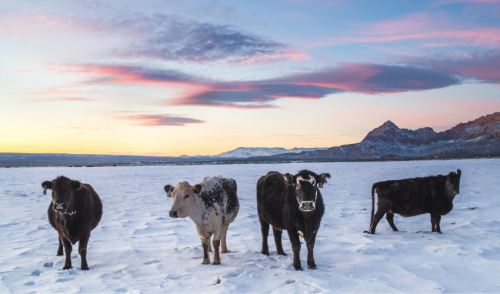{article.name}
Using Tank De-Icers During Cold Weather

- Share this:
- Share on Facebook
- Pin on Pinterest
- Tweet on Twitter
The lower temperatures drop, the more livestock needs liquid water to stave off sudden chills and resist the cold. While cattle, horses, sheep, goats, and other animals can and will eat snow or ice to meet their moisture needs, doing so can dramatically lower their body temperatures and make them more susceptible to frostbite, hypothermia, and illness. Using tank de-icers during cold weather can help you keep an adequate liquid water supply readily available to meet your animals’ needs.
Why You Need a De-Icer
Tank de-icers aren’t only necessary to keep liquid water available to your animals, they’re also essential to protect the tanks and pipes that bring water to your troughs, stalls, or corrals. Water expands as it freezes, increasing the pressure on your water supply’s components. As that pressure rises, it can cause tanks to rupture and split. Pipes can burst, spigots can warp, and seals can fail as well, creating leaks that spill water and create dangerous, icy or muddy footing. Depending on where your water supply is located and how large the tanks may be, you could even flood nearby areas with a bad spill. When your water supply vanishes from these leaks, valuable time and money must be used to correct the problem, and you may need to resort to hauling water or chopping ice instead, both of which take much more time and effort than using a proper de-icer.
Choosing the Best De-Icer for Your Needs
There are several different de-icers to choose from to help keep your water supply liquid and accessible. Which model you choose will depend on your individual needs and the water consumption of your animals. Factors to consider when choosing a de-icer include…
- Model Design – Some de-icers are designed to float on top of the tank, keeping upper levels of water liquid right where animals will be drinking. This is convenient, but could also lead to uneven temperatures in the tank or mischievous animals nibbling on the de-icer or its cord if they can reach it. Submersible de-icers can eliminate these problems but may not be suitable for every tank style.
- Tank Capacity – A larger tank will require a larger, more powerful de-icer to safely keep the water liquid. In the largest tanks, there may still be freezing around the rim or edges of the reservoir, but it is important that the bulk of the water stay liquid to avoid any problems with ice expansion or temperature variations.
- Power Source – Different de-icers require different power supplies. Some run off batteries, which is convenient for isolated regions or if electrical power may fail, but the batteries do wear out and will need replacing. Electrically-run de-icers require a suitable outlet to operate, and there are also propane-run models that can be hooked up independently.
- Thermostat – The best de-icers have built-in thermostats that monitor the water temperature and automatically shut off as the water warms. This keeps the water liquid but also conserves energy and minimizes the risk of the unit operating unsafely. Some thermostats may also be set manually, depending on the de-icer model.
More Tips to Protect Your Water Supply
While a de-icer is a great step to keep your water fresh, clean, and flowing even on the coldest days, there are other steps you can take to be sure there are no winter problems with your water supply.
- Thoroughly drain unused parts of your water system in the fall to eliminate pockets of standing water. This includes disconnecting hoses as necessary until they will be needed again in spring.
- Insulate tanks, pipes, and spigots with appropriate accessories to preserve heat. This will keep de-icers working efficiently and minimize potential overloads and heating failures.
- Add circulation to the tank to evenly distribute warmer water and avoid ice buildup in one area. A bubbler or similar simple accessory can easily move water in the tank.
- Check your water system frequently and stay alert to any potential problems before they become disastrous failures. Small issues are much easier to fix than major leaks.
Water is critical for your livestock all winter long, and with the right de-icer and other steps to protect your water supply, you won’t have to worry about ice buildup, frozen pipes, or other winter problems that might cause a splash.



Comments